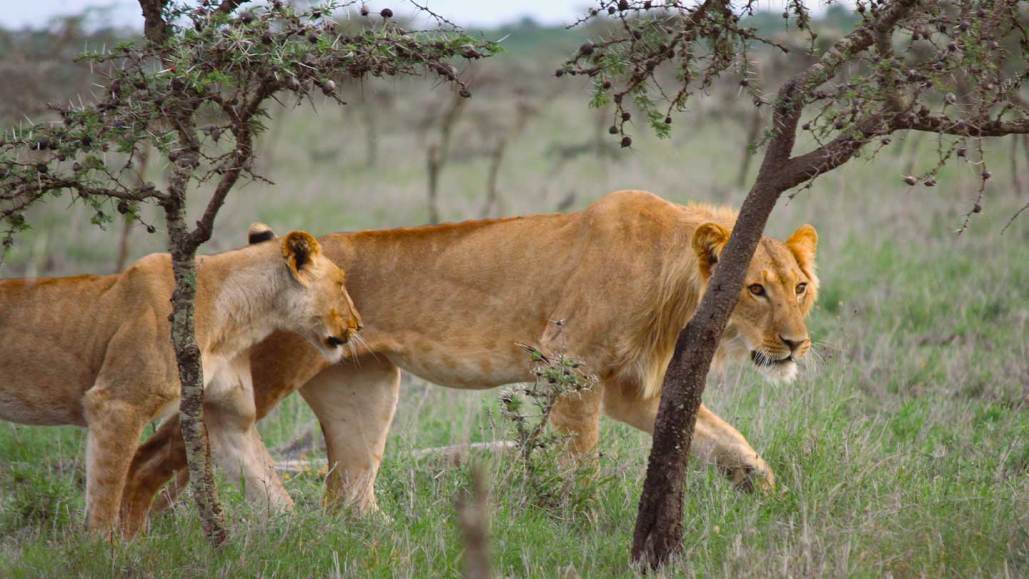The Impact of an Invasive Ant on a Lion's Food Choice

The unexpected theft of a lion's dinner by an ant isn't the start of a new fable by Aesop. Instead, it's revealing insights from a recent study about the significant impact minor disruptions in mutual relationships can have on the food chain, affecting it all the way up to the top, in this case, the lion in the African savanna.
When mega-headed or big-headed ants (Pheidole megacephala) infest the savanna, they destroy the native acacia ants (genus Crematogaster), effectively depriving local whistling thorn trees of their valuable protectors against grazing elephants. With no ants to act as deterrents, elephants have a free hand in obliterating the thorn trees, resulting in sparse grassland and making it increasingly difficult for lions to hunt their favored zebra prey. Consequently, lions are forced to switch to hunting buffalo. Published online on January 25 in Science, the study asserts the broad and often indirect effects of invasive species, implying that alterations in different low-tier mutualisms might also reverberate throughout the food chain in various ecosystems.
For approximately the past decade and a half, wildlife ecologist Jake Goheen, in collaboration with colleagues from the University of Wyoming in Laramie and the Ol Pejeta Conservancy in Laikipia, Kenya, have researched how acacia ants provide defense for whistling thorn trees. Describing the defensive tactics, Goheen uses the example of an elephant attempting to prey on a tree. He reports, "ants swarm up inside its nostrils and bite from the inside out."
Concurrently, the team has also been investigating the dietary habits of the conservancy's lions, as part of a different study. It was concluded that lions were notably more successful in hunting in areas with dense tree cover, according to Goheen.
The team was curious what occurs when tree cover is suddenly scant. Goheen, along with his team, equipped six lionesses from the resident prides with collars to observe their conduct and their kills. Experimental areas were also organized where big-headed ants had encroached, and where native ants still dominated.
Between 2002 and 2005, the big-headed ant made its appearance at the conservancy, probable imports via produce, brought to local homes or tourist camps. These invading ants exterminate local acacia ants wherever they encounter them. Other studies have confirmed that without protective ants, elephants destroy thorn trees five to seven times more frequently.
The team didn't have ample funds for employing drones or satellite imaging for examining tree cover. Hence, they adopted a different approach - tracking their collared lions and conducting field surveys on four limbs near recent lion kills, and utilizing a range finder to gauge the openness of the site. They found that areas invaded by big-headed ants offered 2.67 times more visibility than those free of these ants, implying, both lions and prey could see further.
The researchers discovered that lions counted on the tree cover for surprising unsuspecting zebras in their vicinity. Areas with low visibility resulted in a zebra kill probability of 62 percent. Conversely, lions had only a 22 percent chance of bagging a zebra in areas of high visibility.
Over a span of three years, zebra meat in the lion’s diet reduced from 67 percent to 42 percent of their kills. However, the lions did not starve. They switched to buffalo meat, with buffalo kills surging from zero to 42 percent of kills during this period. But opting for buffalo does come with associated risks, as per Goheen. Buffalo are sizable and unruly, and lions pursuing buffalo are more prone to injuries.
According to Emilio Bruna, a plant ecologist from the University of Florida in Gainesville, the study illustrates that "the disruption of a mutualism can have cascading effects on other species in the community," and that these effects can often be unanticipated and indirect.
Bruna believes the findings imply that ecologists should be on the lookout for more pairs like the acacia ant and the thorn tree. These dyads, where a solitary unique bond constitutes the foundation for an ecosystem, are likely to lead to a savanna-wide alteration in the predator-prey dynamic with a mere disruption of an anthill.




